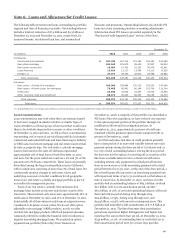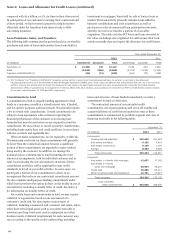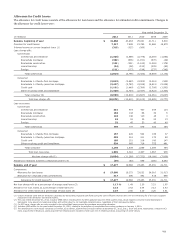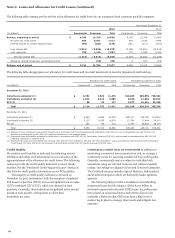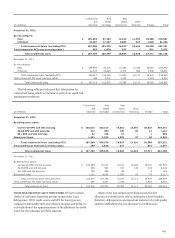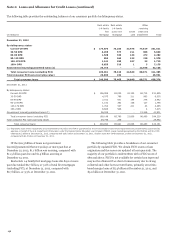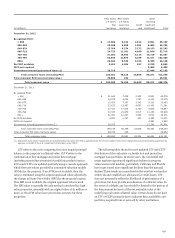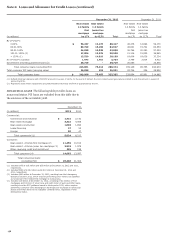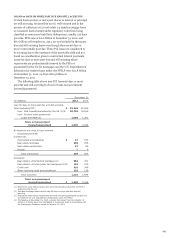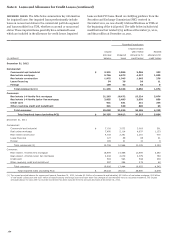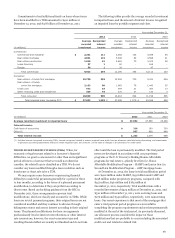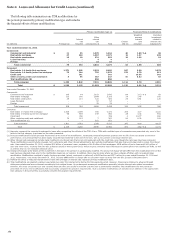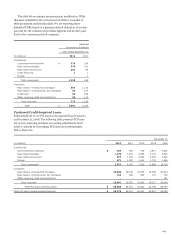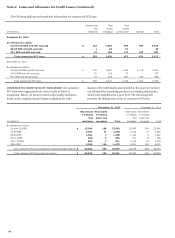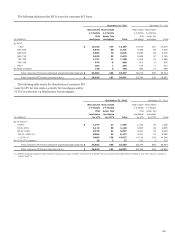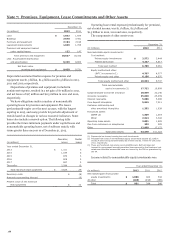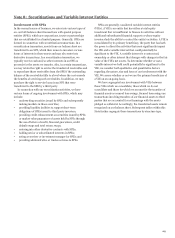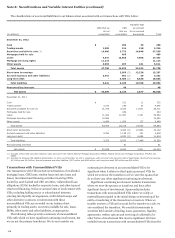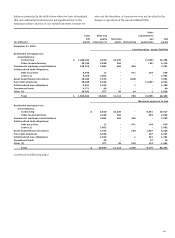Wells Fargo 2012 Annual Report Download - page 163
Download and view the complete annual report
Please find page 163 of the 2012 Wells Fargo annual report below. You can navigate through the pages in the report by either clicking on the pages listed below, or by using the keyword search tool below to find specific information within the annual report.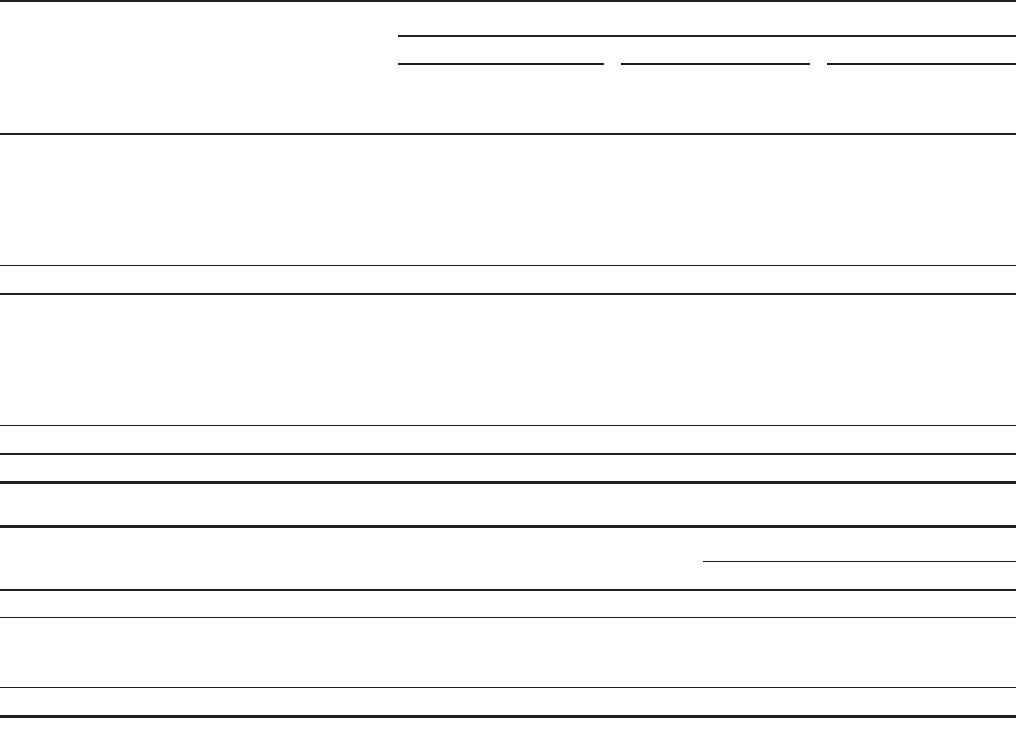
Commitments to lend additional funds on loans whose terms
have been modified in a TDR amounted to $421 million at
December 31, 2012, and $3.8 billion at December 31, 2011.
The following tables provide the average recorded investment
in impaired loans and the amount of interest income recognized
on impaired loans by portfolio segment and class.
Year ended December 31,
2012 2011 2010
Average Recognized Average Recognized Average Recognized
recorded interest recorded interest recorded interest
(in millions) investment income investment income investment income
Commercial:
Commercial and industrial $ 2,281 111 3,282 105 4,098 64
Real estate mortgage 4,821 119 5,308 80 4,598 41
Real estate construction 1,818 61 2,481 70 3,203 28
Lease financing 57 1 80 - 166 -
Foreign 36 1 29 - 47 -
Total commercial 9,013 293 11,180 255 12,112 133
Consumer:
Real estate 1-4 family first mortgage 15,750 803 13,592 700 9,221 494
Real estate 1-4 family
junior lien mortgage 2,193 80 1,962 76 1,443 55
Credit card 572 63 594 21 360 13
Other revolving credit and installment 324 44 270 27 132 3
Total consumer 18,839 990 16,418 824 11,156 565
Total impaired loans (excluding PCI) $ 27,852 1,283 $ 27,598 1,079 $ 23,268 698
Year ended December 31,
(in millions) 2012 2011 2010
Average recorded investment in impaired loans $ 27,852 27,598 23,268
Interest income:
Cash basis of accounting $ 316 180 250
Other (1) 967 899 448
Total interest income $ 1,283 1,079 698
(1) Includes interest recognized on accruing TDRs, interest recognized related to certain impaired loans which have an allowance calculated using discounting, and amortization
of purchase accounting adjustments related to certain impaired loans. See footnote 1 to the table of changes in the allowance for credit losses.
TROUBLED DEBT RESTRUCTURINGS (TDRs) When, for
economic or legal reasons related to a borrower’s financial
difficulties, we grant a concession for other than an insignificant
period of time to a borrower that we would not otherwise
consider, the related loan is classified as a TDR. We do not
consider any loans modified through a loan resolution such as
foreclosure or short sale to be a TDR.
We may require some borrowers experiencing financial
difficulty to make trial payments generally for a period of three
to four months, according to the terms of a planned permanent
modification, to determine if they can perform according to
those terms. Based on clarifying guidance from the SEC in
December 2011, these arrangements represent trial
modifications, which we classify and account for as TDRs. While
loans are in trial payment programs, their original terms are not
considered modified and they continue to advance through
delinquency status and accrue interest according to their original
terms. The planned modifications for these arrangements
predominantly involve interest rate reductions or other interest
rate concessions, however, the exact concession type and
resulting financial effect are usually not finalized and do not take
effect until the loan is permanently modified. The trial period
terms are developed in accordance with our proprietary
programs or the U.S. Treasury’s Making Homes Affordable
programs for real estate 1-4 family first lien (i.e. Home
Affordable Modification Program – HAMP) and junior lien (i.e.
Second Lien Modification Program – 2MP) mortgage loans.
At December 31, 2012, the loans in trial modification period
were $402 million under HAMP, $45 million under 2MP and
$258 million under proprietary programs, compared with
$421 million, $46 million and $184 million at
December 31, 2011, respectively. Trial modifications with a
recorded investment of $429 million at December 31, 2012, and
$310 million at December 31, 2011, were accruing loans and
$276 million and $341 million, respectively, were nonaccruing
loans. Our recent experience is that most of the mortgages that
enter a trial payment period program are successful in
completing the program requirements and are then permanently
modified at the end of the trial period. As previously discussed,
our allowance process considers the impact of those
modifications that are probable to occur including the associated
credit cost and related re-default risk.
161


